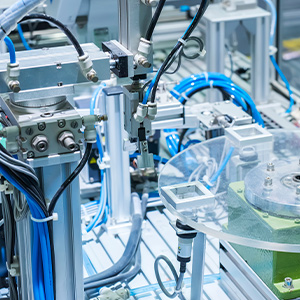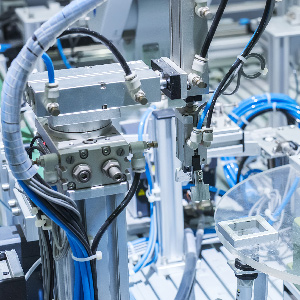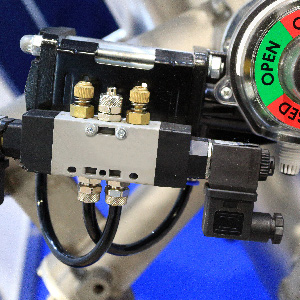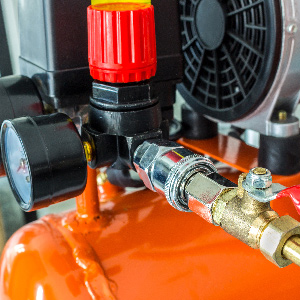7 Tips For Improving Airflow Efficiency In Pneumatic Systems
Post By: Tom Rowse On: 03-08-2020 - Pneumatics
When it comes to any industrial installation, you want to be sure of optimal performance and efficient use of energy. One of the ways you can do this is to look at improving airflow efficiency in your pneumatic systems. The first rule of efficiency is preventive maintenance, and this means examining your equipment carefully to check for faults before they occur. In this way, you reduce the likelihood of downtime to replace or repair components in the event of a breakdown, and maintain the integrity of your whole pneumatic system.
Our experts at Rowse suggest the following simple tips for improving airflow efficiency:
- Locate Leaks
- Size Components Correctly
- Check Hoses
- Use Appropriate Pressure
- Check Filters
- Install Flow Controls
- Reduce Unnecessary Demand
1. Leaks
Leaks are a common problem in pneumatics. They substantially reduce your airflow efficiency, so it's best to fix them right away before they impact your whole system. You should carry out a full inspection to ensure that no leakage is occurring. Consider investigating the benefits of applying technology such as an acoustic measuring device, to locate and identify leaks.
There are many stages in the system where leaks may occur, two of the most common being around valves and seals. Check that you have the most appropriate type of valve for your application, and investigate soft seals where appropriate. Look also for deterioration in seals, particularly if your system is subject to stress or contamination from its environment. Extremes of temperature, aridity or damp can cause seals to degrade, and you might want to choose a more robust material for seals used in these situations. You might also consider investing in a chiller unit, which cools the airflow and dehumidifies it so that the equipment can function better.
2. Size Matters
Critical components such as valves and cylinders are often incorrectly sized, even though they're crucial in maintaining the optimal functioning of your system. If you opt for cheaper but incorrectly sized components, you'll be putting pressure on other parts of the system, which will then require more energy to compensate. For example, smaller control valves might cost less, but more energy will be demanded from the compressor to supply sufficient pressure to the actuators.
You can also go too big, choosing an oversized cylinder in order to compensate for air losses and pressure fluctuations, but this is unnecessary and will cause further wastage. If you provide more capacity than is needed for your operation, it will demand a greater air supply and use more energy than if the cylinder is correctly sized.
3. Check Hoses
Hoses and tubing are crucial to a pneumatic system, but are frequently overlooked when it comes to system optimisation. Check all your hoses and airlines immediately and regularly, to see if any are worn or incorrectly sized. Replace any hoses that are showing signs of wear to ensure that no sudden pressure drop will occur if a hose suddenly blows. You should also upgrade any older-style rubber hoses for more flexible and durable types.
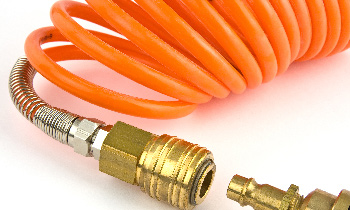
4. Proper Pressure
Along with oversized cylinders, pneumatic systems are often designed without due consideration for energy efficiency, and will deliver more pressure than the actuator really needs for the system to perform. Human operators may also increase the supply pressure in the mistaken belief that this will improve performance, but in effect this just wastes energy. You might consider installing pressure sensors and regulators to maintain pressure at the correct level.
Even more simply, check that the distance between the compressor and the actuator is optimal. Connecting hoses and conduits should be as short as possible, and not more than ten feet – if that won't compromise the load position. If the distance must be longer, you'll probably need greater air pressure in order to position the load correctly, and so you'll use more energy.
5. Clean The Filter
Filtration units are perhaps the hardest working components of your pneumatic system, as they are constantly collecting dirt and particulates which eventually clog them. Checking, cleaning and replacing your filters regularly is a simple way to improve the airflow efficiency in your pneumatic systems, and should form a core part of your preventive maintenance schedule. You might also consider installing an FRL unit – a combination of filter, regulator and lubricator that processes the air in your system in one efficient device.
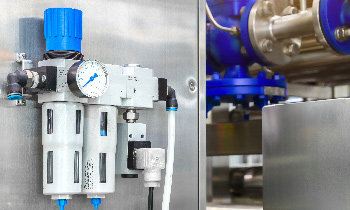
6. Flow Controls
Airflow can easily be controlled by technological fittings that minimise time spent on installation and maintenance. You can swap out older-style flow controls for newer apps to make a great improvement in your airflow efficiency. For more fully automated systems, a fine degree of efficiency can be sustained by deploying sensors and monitors which keep a constant watch on system performance.
7. Reduce Unnecessary Demand
Most pneumatic applications move a load in only one direction. The actuator then has to be returned to its initial position, and most machines draw the same amount of air pressure to do this as on the outward, or working stroke. If you install a spring return actuator for shorter strokes on a single-direction cylinder, it can return the cylinder to its starting position without requiring any air supply to do it. This will halve the work required by the compressor, minimise wear on components, and considerably reduce energy wastage.
Further optimisation can be achieved by installing automatic air reduction controls, which switch off the supply to machines when not in use, while at the same time supplying reduced pressure to any elements that tick over at minimal function, like air bearings.
Technology & Efficiency
Modern technology has devised many tools and software solutions to help with improving the airflow efficiency in pneumatic systems. From correctly sizing components to flow controls and automatic off switches, the modern automated factory has changed the face of energy saving. With a little time dedicated to preventive maintenance, and matching the actual system requirements to the components and air supply, you can achieve greater energy efficiency, and ultimately, improve productivity.
Get More From Rowse Straight To Your Inbox

